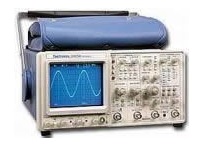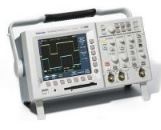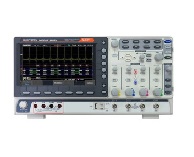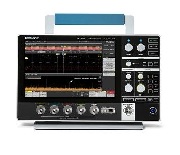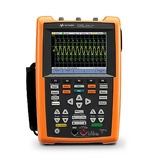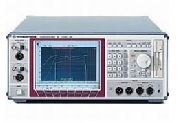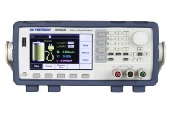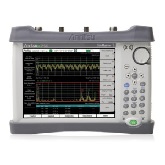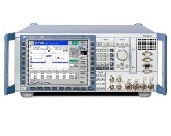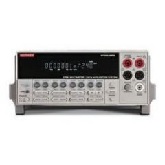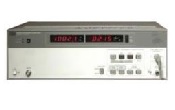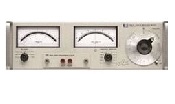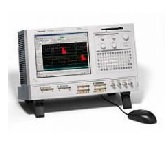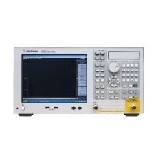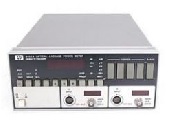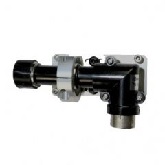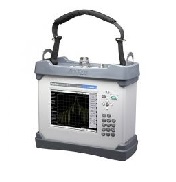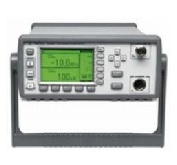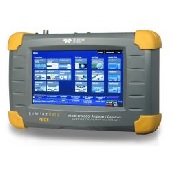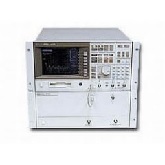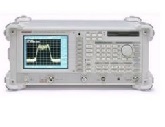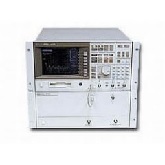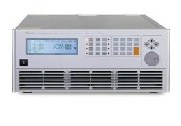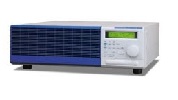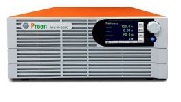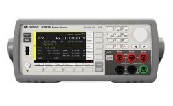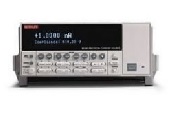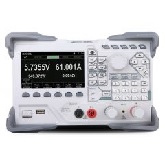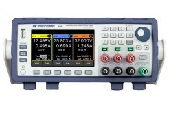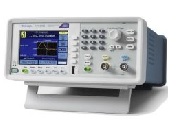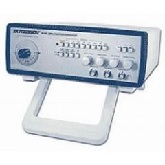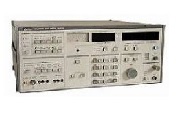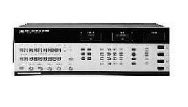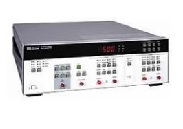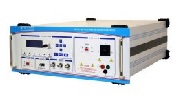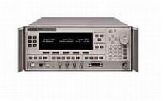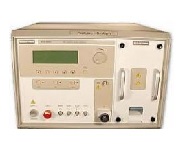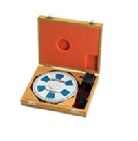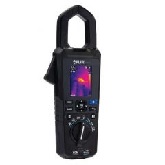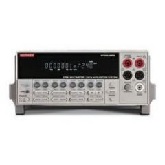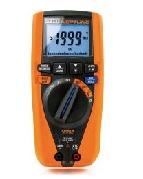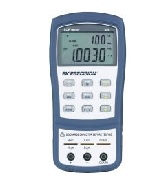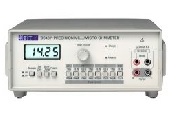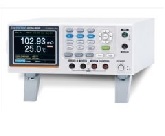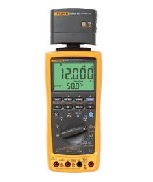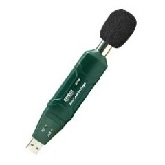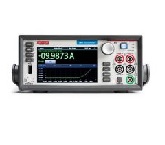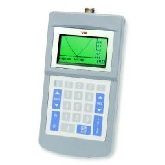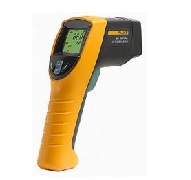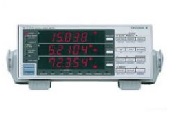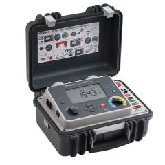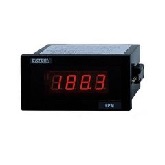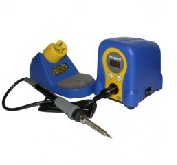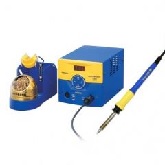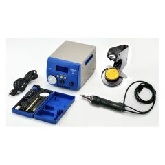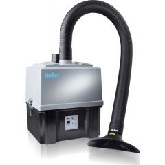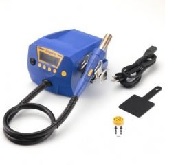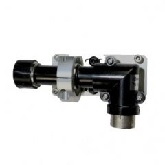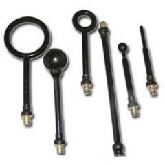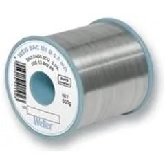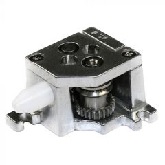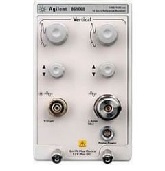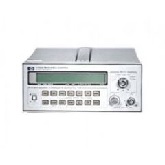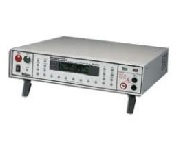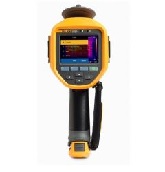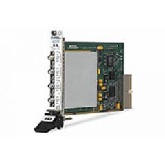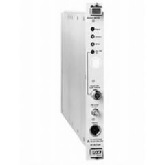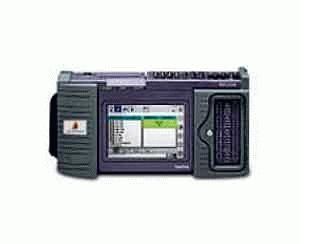Additional Features:
- Includes the T-BERD FST-2310
- SONET/T-carrier transmission testing from DS1 to OC-48 rates
- SDH transmission testing at STM-16, STM-4 and STM-1 rates
- Circuit-switched testing capabilities including GR-303, ISDN, signaling, voice frequency (VF), and digital data service (DDS)
- ATM testing capabilities including CBR/VBR traffic generation, QoS measurements, O.191 test cell generation, and support for OAM alarm and loopback cells
- Engineered for mobile technicians with rugged construction, lightweight design, and battery-powered operation
- Process oriented testing features such as test scripting and remote control operation
- Store and load test configurations—Using the File Manager tool,you can store test configurations to a drive on the unit or to a PCMCIA card. You can also load saved test configurations
- VT100 emulation—You can now perform VT100 emulation using HyperTerminal or the custom VT100 application
- Enhanced security—This release of the FST-2310 provides enhanced security, allowing you to enable or disable key connectivity applications
- The FST-2310 provides you with the tools you need to provision DS1to OC/48c or STM-16c service, verify end-to-end network performance, and perform network analysis under simulated abnormal conditions
- DS1, DS3, SONET, and SDH interfaces—The FST-2310 is available in seven configurations which offer interfaces for DS1, DS3,and SONET testing. You can also purchase the SDH Analysis option to test STM signals from the optical interface
- Dual receive for DS1, DS3 and STS-1—The FST-2310 provides dual receivers for DS1. If you purchase the DS3 or STS-1 configuration with a dual receive option, the FST-2310 provides dual receivers for the corresponding rate
- Monitor/Thru, Terminate, and Drop and Insert tests—You can perform these tests for each rate available on the FST-2310
- BERT patterns—You can transmit BERT patterns for each rate available on the FST-2310
- Frame types—The FST-2310 supports a variety of frame types for DS1, DS3, SONET, and SDH rates
- Error and alarm insertion—You can insert a variety of errors into traffic, such as frame, BPV, and logic errors
- Print capability—You can print test configurations and test results using the FST-2310. You can generate a print file at timed intervals or whenever a test ends. You can also manually print test configurations, test results, and histograms at any time
- View Portable Document Format (PDF) files—You can launch and view PDFs on the TestPad
- Command line remote control—You can configure the TestPad and perform tests from a remote PC or laptop by issuing remote control commands
- FST-2310 Help—You can display FST-2310 online help which includes detailed instructions for configuring and performing tests, comprehensive result descriptions, and a glossary of terms
- Remote GUI—You can use the Remote GUI to run the TestPad GUI from any remote device with a Web browser, such as a PC or laptop
- When viewing the GUI from a remote device, you can configure and perform tests, view test results, and do anything you could do using the FST-2310 itself
- VNC Viewer—You can launch the Virtual Network Computing(VNC) viewer to run remote applications from the FST-2310
- Operating Temperature: 32°F to 113°F (0°C to +40°C)
- Storage Temperature: -4°F to 158°F (-20°C to +70°C)
- Humidity: 10% to 90% Relative Humidity, non-condensing
- Shock and vibration: Meets IEEE-743
- Battery: Rechargeable 10.8 V Nickel-Metal Hydride(NiMH)
- Operating time: Typically provides up to 1.5 hours of operation performing DS3/DS1 tests; Typically provides up to 30 minutes of operation performing STS-1 and OC-3/12SONET tests; Typically provides up to 25 minutes of operation for OC-48 SONET tests
- Recharging period: Maximum of 1.5 hours
- AC adaptor: 19 VDC, 2.95 amps; 100 - 240 VAC, 50 - 60Hz
- Cable: 75 Ohm RG59 B/U cable, attenuation measured at 22.368 MHz is 5.7 ± 0.2 dB per 450ft. of cable
- Connector type: Bantam jack
Applications:
- SONET Analysis
- SDH Analysis
- DS3 Analysis
- DS1 Analysis
- DS1/DS3 Jitter analysis
- ATM Analysis
- GR-303 Protocol Link Analysis
- ISDN PRI Testing
- Signaling Analysis
- Loop-Back Applications
The lightweight, battery-powered TTC 2000 is engineered to excel and built to endure. With one-touch physical layer and services testing combined in a lightweight, handheld instrument, field technicians can sectionalise problems on the first visit and reduce service escalations. Touch-screen access to statistics for BERT, voice, CAS, PRI, and more give your technicians insight into protocol-based problems without having to carry or operate a protocol analyzer.
The graphical user interface (GUI) is based on a powerful combination of touch-screen software and a VGA-compatible grey-scale LCD. No test instrument has ever been this simple or elegantly durable. Testing is automatic - with the touch of an icon, technicians can have the information they need and be on their way to the next test site.
The unpredictability associated with field testing demands battery operation. Powered by a state-of-the-art nickel-metal-hydride (NiMH) battery, the TTC 2000 goes wherever you need it. The battery is easily accessible - replace it as needed and resume testing in seconds.
The TTC 2000 utilises technology advances in low-power design, high-integration ASICs, and state-of-the-art memory and logic devices to minimise size and maximise battery life. Each battery charge delivers four hours of un-interrupted battery operation.
The JDSU FST-2310 TestPad is an all-in-one testing solution that performs SONET, SDH, T-carrier, data, and circuit-switched testing to meet the varied testing requirements of mobile technicians. Its modular architecture protects long-term investment by providing the flexibility, scalability, and upgradeability to support evolving test needs. Most tests performed using the FST-2310 can be done in only a few button pushes, without the need to sift through hidden setup menus. Additionally, because technicians need only minimal training to use the FST-2310, testing objectives are addressed quickly and the cost of ownership is significantly reduced.
Test application buttons are labeled with icons that clearly depict the way the test is performed on the circuit; for example, select the “MON/THRU” icon when performing circuit-monitoring tests – select the “TERM” icon when performing circuit-terminating tests. The icons and quick setup buttons enable technicians to use the module effectively with very little training.
Identify the source of problems quickly by using the FST-2310’s dual results window to analyze results from different signal rates simultaneously. Simultaneous results analysis can also be performed on different signal results (for example, level and bit errors) allowing for easy results correlation and quick problem identification.
Support for autoconfiguration is provided for all key applications. Autoconfiguration is capable of setting different test parameters, such as framing and pattern, as well as detecting the signal’s multiplexed composition. This enables users to reduce the time required for test setup. Additionally, the FST-2310 has the ability to save and store up to 10 test set configurations that can be recalled for future use.
The FST-2310 TestPad SONET Services Module is the ideal telecommunications solution for testing OC-48/12/3, STM-16c/4c/1, STS-1,and DS3/1. The FST-2310 is optimized for field use because it is portable and easy-to-use. As a member of the Acterna TestPad 2000 family of products, the FST-2310 has a touch screen user interface that simplifies test setup and reduces test configuration time. The “smart tester” icon-driven interface is easy to learn, and the large display screen provides ample space for viewing test results.
Remotely configure tests and analyze results in detail using the remote control GUI option. This allows technicians to conveniently operate the module from a remote location using the FST-2310’s graphical user interface (GUI) on a remote PC. The remote control GUI feature enables technicians to connect to the FST-2310 through the PCMCIA serial or modem card to perform tests and collect test results.
Jitter analysis option for DS1 and DS3 configurations—The jitter analysis option allows you to detect jitter hits in highband and wideband ranges on received DS1 and DS3 signals. You can specify positive and negative thresholds for detecting jitter hits. Jitter results also include peak-to-peak measurements, expressed in UIpp (unit intervals peak-to-peak); count of jitter hits; jitter percent mask; and the maximum positive and negative jitter peaks.
| Manufacturer | Acterna |
|---|---|
| Condition | Used |
| FST-2310 | Field Services Module |
|---|


